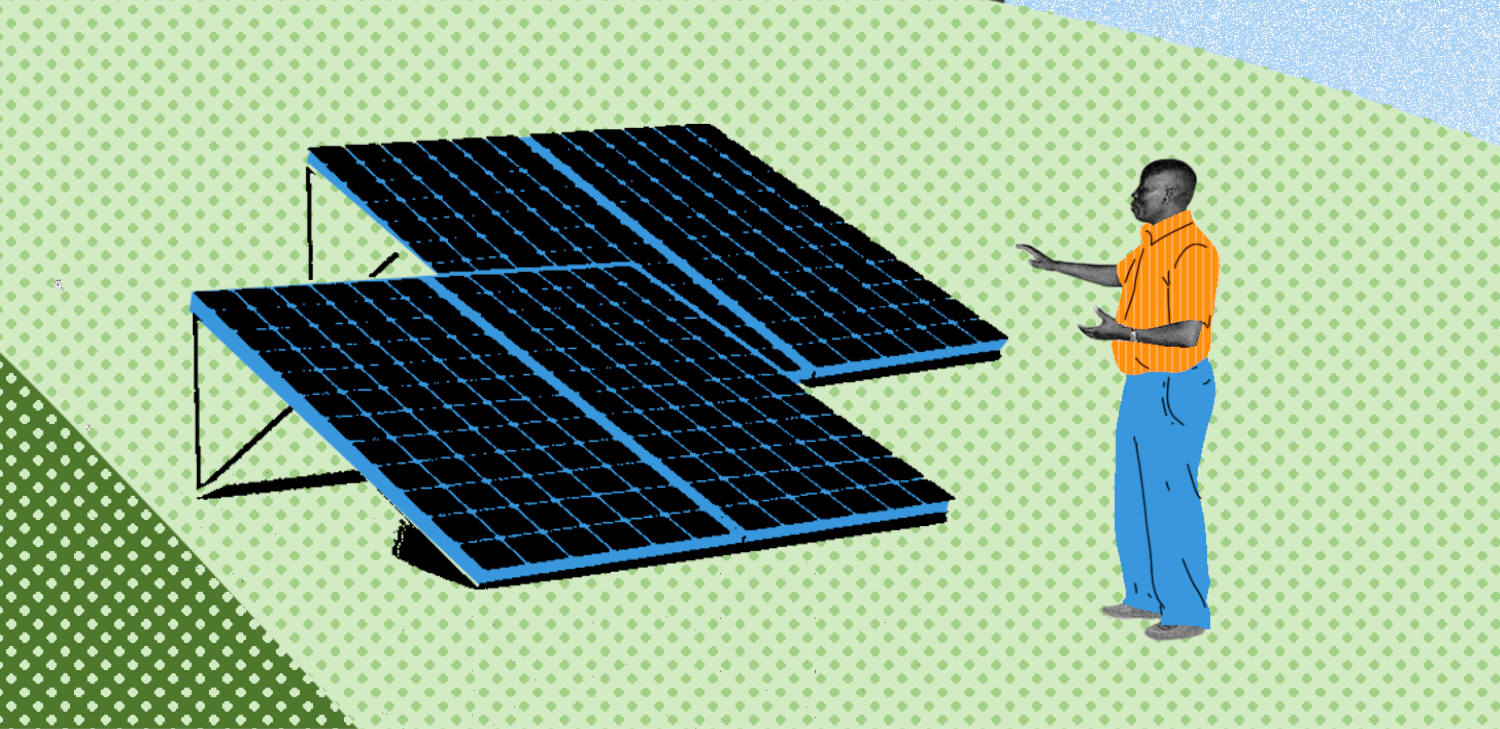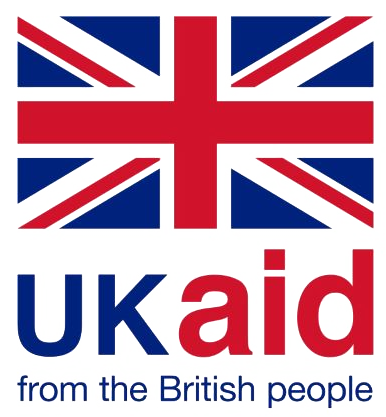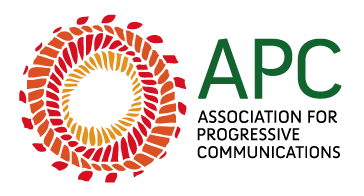#12 Celebrating community networks making change in Kenya and around the world
We’ve reached the last episode of our season together. And the story in it will inspire you, while showing how community networks are essential and possible when different people get involved. For that, we’ll travel to Nairobi, the capital of Kenya, to meet James Nguo from the Arid Lands Information Network (ALIN), which works especially with the country’s rural population. This initiative shows how education, environmental justice and connectivity can be linked.
You will also get to know Kathleen Diga, speaking straight from Durban, in South Africa. She works for the Association for Progressive Communications (APC) and is the co-lead for the Local Networks initiative.
“Routing for Communities” is a 12-episode podcast. Here you will listen to the life stories of people who are connecting themselves while defending the well-being of their communities.
Stories and voices that are intertwined, connected by one thread: building internet and communication community networks.
Hello! This is me again, Renata Porto. I am from Brazil, and I am leading you through this 12-episode season around community-led initiatives on internet and communication.
And we’ve reached the last episode of our series. The story I’m about to tell you is going to inspire you on how community-led networks are essential and possible when different people get involved. For that, you will travel with me to Nairobi, Kenya. We’re going to meet James Nguo, from the Arid Lands Information Network, ALIN.
“For us, we start with the people, the people's needs, whether they are few in some isolated place, those are the people we want to bring to the digital inclusion.”
You will also get to know Kathleen Diga, speaking straight from Durban, South Africa. She is the co-lead for the Local Networks initiative and staff member at the Association for Progressive Communications (APC).
“Today, I think we can celebrate the fact that we are growing a network of grassroots communities who are filling the gap of community-centred connectivity.”
So, join me on the last journey of our season!
Routing for communities: An audio journey tracing community connectivity around the world.
Since we started this podcast production, our team kept hearing from specialists that Kenya was an emblematic case to better understand how a regulations and legislation ecosystem is so important to community networks. As a matter of fact, we’ve already talked about Kenya on Episode 2, about TunapandaNet. If you haven’t listened to yet, here’s another invite…
So, in this episode, we decided to talk a little bit more about this country.
“Hello, James.
Hello?
How are you?
Fine and sorry about my technology mix-up. I was trying on the podcast again, then finally got this link.”
James Nguo lives in Nairobi, Kenya’s capital, a city with over four million inhabitants. The country has a total of 53 million people. Nairobi is considered cosmopolitan and vibrant, but it is also marked by huge social and economic disparities, with a large number of urban clusters.
And in the rural areas, such inequalities are even more evident in Kenya, especially in almost completely arid and semiarid lands.
“About 80% of Kenya's population lives in rural areas with half of this proportion being poor. The rural population mainly depends on small-scale agriculture for food and income, suggesting that smallholder agriculture remains the major engine of rural growth and livelihood improvement for any pathway that can lift large numbers of rural poor out of poverty.”
ALIN works especially with the country’s rural population.
“My name is James Nguo. I'm the director of ALIN, or Arid Lands Information Network, based here in Kenya, but working across East Africa. We work strategically on three objectives. The first one is climate resilience where we support communities to mitigate the effects of climate change and have adaptation measures in place. Then we touch on agricultural productivity, because it is affected by what is happening in the environment. But most important and what ALIN is known for, for a long, long time, is digital transformation, supporting communities to embrace and take up the power of information and communication technologies by deploying solutions that enable people in the rural areas especially to appreciate the power of technology and use technology solutions to advance their businesses, social enterprises, civic participation, education, agriculture, among others.”
Besides Kenya, ALIN works in other neighbouring countries, such as Tanzania and Uganda. In fact, ALIN started off working in the whole continent, being established by different organisations in 1987. In 2011, it was officially registered as a non-governmental organisation in Kenya.
One of ALIN’s main initiatives was to edit and publish a magazine about agrarian topics, called Baobab, named after one of the most important trees of Africa. The magazine is still thriving and it was from Baobab that the work with community networks emerged.
From the early 2000s, the network started to work alongside the now defunct WorldSpace, an American organisation which, through satellite technology, provided access to radio internet. Using such technology, ALIN members started to access Baobab issues online and other content.
“By that time, around 2000 way into 2004, connectivity was not even an issue discussed in the rural areas, because mobile connectivity was not available. There were mainly fixed telephone lines. And ALIN filled that gap by deploying internet radios from WorldSpace. And that is where ALIN started what we called focal groups, which finally came to be known as access points. Access points are where you find ALIN presence with at least one computer and up to a maximum of five, and the community members were trained on the operation of these computers and the downloading of the content using that special radio. It's at that point we brought other content providers from across the sectors, so that they could use the portal that ALIN was given by WorldSpace to be able to disseminate information to their people on the ground, who included scientists, essential workers and, you know, many other development workers. It was an exciting moment for us.”
Over time, the establishment of access points began to be expanded to various Eastern African countries such as Kenya, Uganda and Tanzania. These computer centres were then called “Maarifa”, which means “knowledge” in Swahili.
Community volunteers as well as universities started to be trained to work in these centres. They developed projects on access to information as well as production and documentation, having new information and communications technologies, the so-called ICTs, as their foundation.
Over the last two decades, ALIN has worked on a series of projects with international partners. It has also won a number of awards and recognition for reaching rural communities using the Maarifa Centre model.
And that is how ALIN’s work could expand with the creation of dozens of connectivity centres every year, besides projects to educate and include younger generations. These were the paths that led ALIN to work with community networks.
In July 2023, ALIN was able to get one of the first approvals from Kenya’s regulatory agencies. It obtainined a licence to implement a community network in the Rift Valley region. From that moment on, they have been raising funds to create community networks. According to James, the idea is that one of the Maarifa Centres grows and becomes a community network, and they are extremely excited about the prospects.
“ALIN has gotten approval from the regulator, who is the Communication Authority, to deploy a community network in a place called Sipili. Sipili is four hours out of Nairobi, in the northern direction, into the Rift Valley. It's a rural setup, a small town of about 3,000 trailers, but over 100,000 people, mainly engaged in farming. Many of these people are involved in subsistence farming, because they are growing food for their own consumption. They keep animals. And the area is a bit dry, so issues around climate change affect them in a big way. But they are very hardworking people because they build water dams, water ponds for their animals, and they use them for irrigation. And actually, they are able to produce a lot of food compared to many areas here in Kenya. So, we've walked a long journey with this community. It's a community that relies a lot on the power of information and knowledge. So, they're excited that they will have a network that is going to facilitate them, not only in their own agriculture practices, [but also] in education, entertainment and civic participation.”
The Licensing and Shared Spectrum Framework for Community Networks was published in Kenya in 2021 and seeks to regulate public networks in the country’s communities, offering primarily Wi-Fi services. One of its main goals is to guarantee economic accessibility and to improve service efficiency via community networks, especially in relation to internet connectivity.
The framework recognises and establishes the distinction between community and private operators according to their size and reach. In other words, for the communities, licensing projects must be simplified and be accessible, given their realities. We celebrate ALIN for being issued one of the first community network licences under the new framework.
To sum up, the resolution brings in the establishment of another separate regulatory model for community networks. Thus, it seeks to create a better environment in the country for initiatives promoting internet access in marginalised or forgotten areas that commercial operators are not interested in reaching because they are deemed unprofitable.
What the Communication Authority of Kenya does is to recognise the value and importance of community networks, especially with rural populations, impoverished urban communities, and other traditional communities in the country.
“The main challenge [is that] the main players want to deploy their networks where they will realise gains in terms of commercialising their own businesses. And for us, we start with the people, the people's needs, whether they are few in some isolated place; those are the people we want to bring to the digital inclusion, irrespective of whether it makes economic sense or not. To us, if we can deploy a network that can be self-sustaining, we charge just a small fee that we plough back into the network for sustainability, that is what we will be looking at.”
And after going to Kenya, now we’re off to Durban, in South Africa. This is the home of our second guest for this episode.
“My name is Kathleen Diga and I am the co-lead for the Local Networks initiative and I am from the Association for Progressive Communications [APC]. I am based here in Durban, South Africa. So, the Local Networks initiative is a collective effort between APC, Rhizomatica and several partners that are based in the global South, and really the ultimate objective is to create an enabling environment for community networks or community-centred connectivity initiatives, and largely in the global South. So, it's enabling whether it be through creating peer exchange, learning, through policy, through local innovation, through gender. We really try to look at a holistic view of how to bring communities that work at the the grassroots level together and to be able to enable their community needs through community connectivity.”
Kathleen is part of APC, which alongside other organisations such as Kenya ICT Action Network and local communities, contributed to the process of discussing and providing technical support for Kenya’s Communication Authority. And they could count on the support from the United Kingdom in their initial stage, from 2020 to 2021, so that they could develop community network licensing.
This joint effort contributed towards the analysis of topics to make sure different licensing categories are, in fact, accessible to community and network organisations. For example, at the moment, non-profit community networks as well as co-ops can request a specific licence with an initial $10 fee and subsequently an annual $50 fee.
Another example is present in the strategic plan for Kenya’s proposed Universal Service Fund. According to the plan, the country’s regulatory agency will support the development of 100 community networks in the next five years.
“Kenya has been exemplary in terms of the space of collective action and policy. Kenya has been an interesting example of operationalising community networks through their relatively new Community Network Licensing Framework. This new framework is intended to see communities being able to overcome some of the bureaucratic and very expensive fees of connectivity, of being a licensee and be able to do so as a small-scale operator. I would say that what we are learning is that for these communities, the processes are new and they certainly require a lot of accompaniment. So, what we've seen our partners on the ground in Kenya do is working with communities through stakeholder meetings between themselves and the Communication Authority of Kenya. The Kenya partners have also been seen to value the idea of mobilising together and being a collective. They have established their own Association for Community Networks in Kenya. And I believe that in this unified voice they will be able to help facilitate a singular message between civil society or communities and the government.”
We know there’s a long way ahead of us in the development of community-led networks, as well as in the process of empowering marginalised populations across the globe so that internet connectivity and communication keep advancing. And yet, Kathleen argues there have already been victories worthy of celebration.
“Today, I think we can celebrate the fact that we are growing a network of grassroots communities who are filling the gap of community-centred connectivity. I believe that these networks now have an understanding and knowledge of the communities that are working in the similar field as them, who are indeed trying to meet the community needs. This is specifically around communication. And I think the networks are also helping them to find partnerships and see through the goals of their constituents. I would want to refer to – you know I'm based in South Africa – this one local language word, “Ubuntu”, and it means “I am because we are.” We are a collective of changemakers and I think it’s this universal bond of sharing and exchange that's connecting us and humanity. So, I really do think in the digital inclusion space, I would say the broader or this global network of actors have a role to play to ensure that we bring the voices and perspectives of marginalised communities to the front and particularly those from the global South.”
These communities are the protagonists in the process of connecting themselves locally or by internet. They also bring in an important reflection about how and why we want to be connected in the first place.
And we have reached the end of this episode, as well as this podcast’s first season.
Today, you could learn more about the Arid Lands Information Network, ALIN, in Kenya, as well as the Local Networks project.
If you want to know more about these initiatives, access the links in the description of this episode on your podcast streaming platform. Over there, you will also have access to Kenya’s Licensing and Shared Spectrum Framework for Community Networks.
Throughout this season’s 12 episodes, we got to know many stories on community networks and of those who take the lead in these processes together with different communities.
Here, we’ve seen experiences in which connectivity walks hand in hand with the fight for other rights: gender and race equality, education, Indigenous cultures, environmental justice and many others. Such diversity of experiences is gathered in one common message about the need to create human and digital networks that are based on the construction of a viable future for all, a time in which rural, remote and marginalised communities have the opportunities, capacities and resources to achieve and shape meaningful community-centred connectivity that contributes to the strengthening of local well-being, economies and cultures.
If you’ve liked this podcast, please recommend it to those you know will appreciate it as well.
You can check out the season on the main podcast platforms or on APC’s website: routingforcommunities.apc.org.
You’ve listened to the 12th episode of “Routing for communities: An audio journey tracing community connectivity around the world”. This is the podcast of the Local Networks initiative, a collective effort led by APC and Rhizomatica. Production: Rádio Tertúlia.
In today’s episode, you listened to audio excerpts from KTN News Kenya.
Thank you and see you next time!
Credits
This podcast is an initiative from the Association for Progressive Communications (APC) and Rhizomatica, produced by Rádio Tertúlia.
Script, production: Vivian Fernandes
Presentation: Renata Porto
Editing and sound: Beatriz Pasqualino
Coordination: Beatriz Pasqualino and Débora Prado
Consulting Board: Flavia Fascendini, Kathleen Diga, Cynthia El Khoury, Bruna Zanolli, Nils Brock, Adrián López and Daniela Bello
Illustrations: Gustavo Nascimento
Web design: Cathy Chen and Avi Nash







